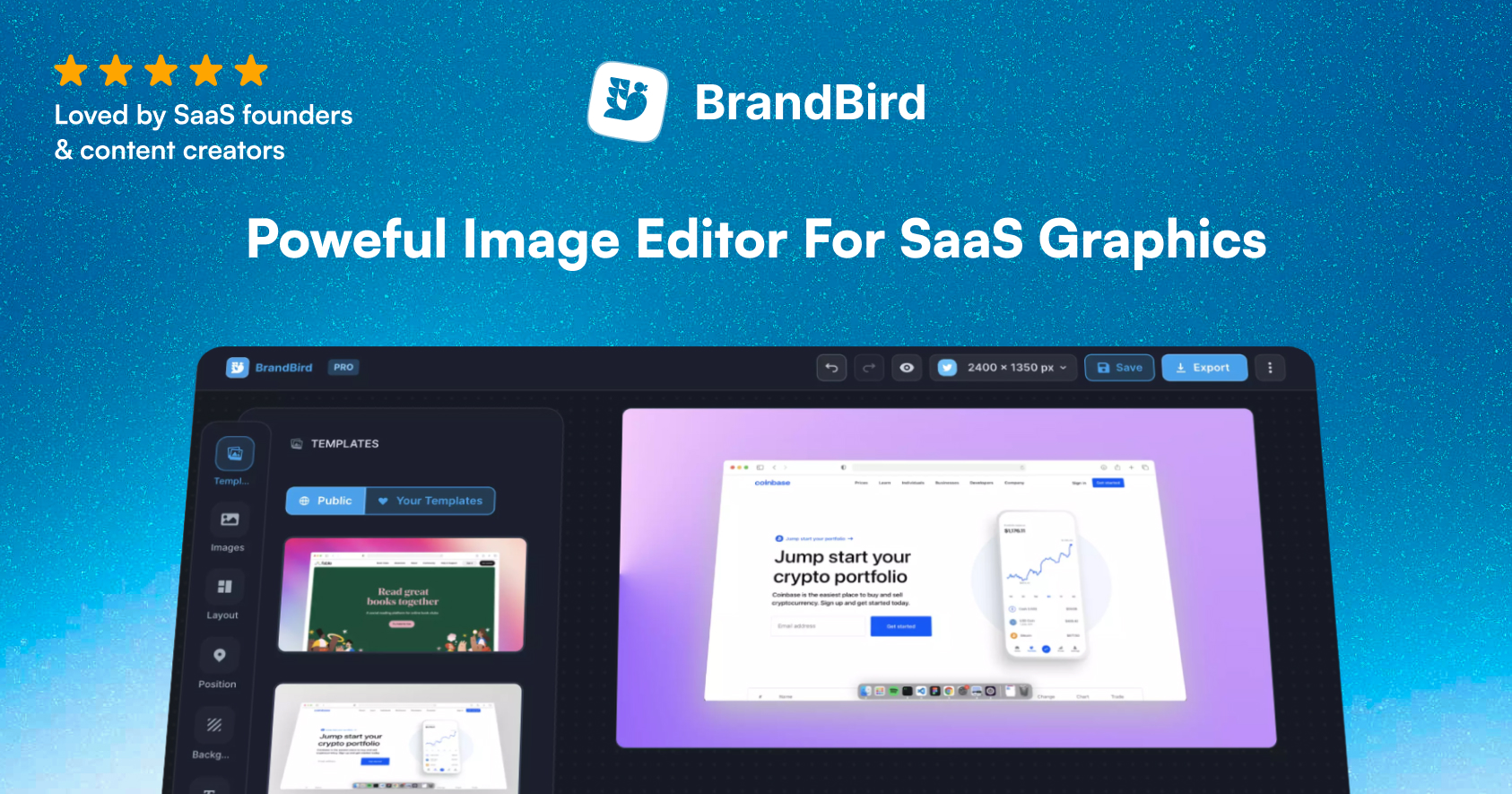2020 was a tough year for everyone!
It was (and will be) memorable about skyrocketing remote working and enforcing face masks in our everyday lives.
For me, it was a unique year with a lot of struggles, emotional meltdowns, and many insane personal and work achievements.
In this article, I want to retrospect the notorious 2020 and share all the key learning during this crazy year.
I'll talk about various axes and share my insight along with key learning. The topics, I want to cover are the following:
- Twitter Presence
- Personal Growth
- Fitness Goals
- Indie Hacking Mindset
- Mindset Shift
- Mental Health & Impostor
- Next Steps & Goals
A brief summary of 2020
- Graduated college after 6 years
- Relocated to a new house with my girlfriend
- Sat in the home due to COVID quarantine for 6 months
- Learn how to speak in English (Thank you Twitter & Google meet)
- Got into my worst & best shape ever
- Sold 3 side projects
- Build a solo micro SaaS app (MagicPattern) and make it profitable
- Made $3k within a month with a simple project
- First public speaking on events and podcasts
- Grew my Twitter from 200 to 1.5k followers
- Build a portfolio (that I actually like) and started blogging actively
- Kickstarted my freelancing career
- Fought impostor syndrome for several months
- Doubt almost every single action I made
- Fought my biggest fears
Let's dive in and unpack the most significant milestones.
Quick Personal Updates
I studied Electrical Engineer since I was 18 years old and managed to graduate last summer. The curriculum's duration is 5 years but took me 6 years to finish it.
The reason was that I was working as a freelancer and then started my startup in the meantime.
During our first lockdown, I found time to write my thesis and pass my last course.
Also, I and my girlfriend took the big decision to rent our own space.
Finding a space to rent is always a shitty experience. I thought that during the COVID crisis rents will go down.
Everyone knew that the COVID crisis will last and affect renting except householders. They set insane monthly rates for shitty homes and took us almost 3 months to find the perfect space.
In July, we moved in and it was the best decision ever.
Lastly, it might surprise you but I rarely spoke in English before 2020\. In fact, it was a huge struggle for me and a big fear too.
But in the last few months, I did tremendous progress in my writing and oral English skills. The way I did that was by tweeting, reading articles, and having regular video chats.
Finally, I'm confident about my English and stopped declining opportunities due to my fears.
Fitness Goals
It was a crazy year for my fitness goals!
Hitting the gym was always a way to release daily stress and clear my mind. Also, home workouts never worked for me.
Thus, you can imagine my shock when I had to stay at home for 3 months (+ 3 more) due to the COVID lockdown.
The result?!
In July, I end up being in the worst shape of my life.
For the first time, I was eating junk food almost daily and candies. I never was into candies before.
One day, I looked at myself in the mirror and felt disgusted.
That was the day I decided to change my habits!
I established a weekly routine. I must workout for 3-4 days per week. At least 20 minutes per workout.
For someone who used to hit the gym for 2 hours, it was a downgrade. But I wanted to be sure that I won't break the habit.
Also, I traded the low intense lifting with HIIT training. And tracked my calories for a while to stop eating shitty food.
After 6 months, I'm in the best shape of my life.
Now, I truly enjoy my 20-minute workouts!
Twitter Presence
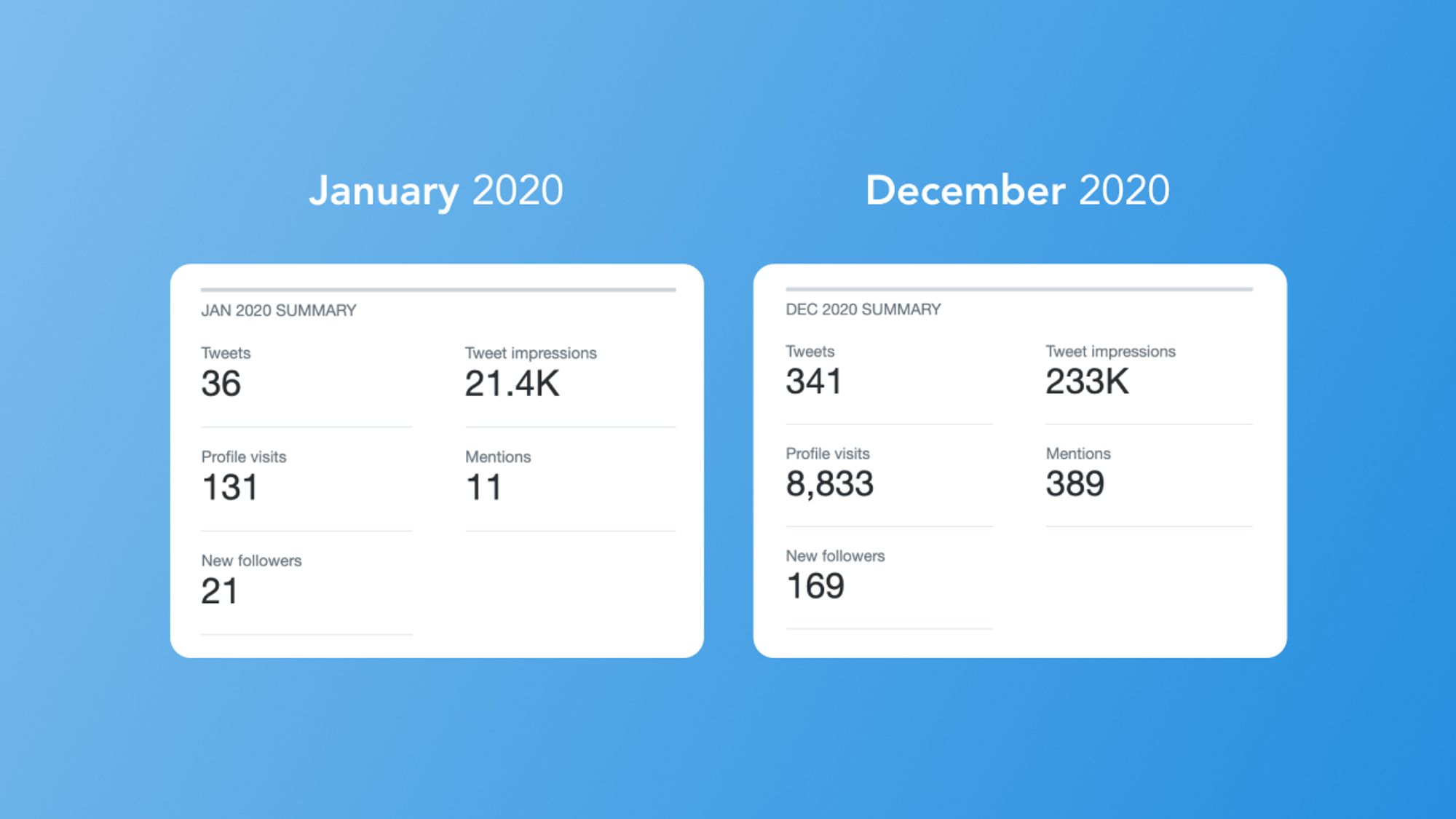
In June, I decided to take Twitter seriously!
I'm a Twitter member since 2017 but I was mostly a content consumer to keep up with trends.
More and more people talk about the power of Twitter and its networking and marketing superpowers.
Then, it was an easy decision for me to focus on this platform to build my personal brand.
One of the best decisions of my whole life!
During the last 6 months, I've met countless inspiring people who shaped my mindset. Building meaningful relationships with like-minded people was never easier.
I managed to grow from 200 followers to 1.5k in less than 6 months. The 1k milestone was my goal when I decided to took Twitter seriously.
It's just a vanity metric and I know it. But it's an indicator that you do something right.
We don't follow people for the sake of following. We follow them because we're interested in their views on a specific topic.
And it's very important to me to know that 1.5k people believe that I have valuable views and ideas.
Went (almost) full-time into my passion
It may look like the ideal year for me but it was far from that.
Back in June, I learned that I have to be unemployed for the next 6 months (for reasons I'll explain in another post). And it sucked.
Having full-time work might suck for many reasons. But having financial security is undoubtedly beneficial.
Then, I focused on building my personal brand.
Built a portfolio, invested in Twitter, went into "Gunshot Mode" with side projects.
At the same time, I took a couple of design freelancing gigs to keep with the freelancing industry and make some extra bucks.
The latter, helped me realize two important lessons.
1. I'm in love with the design
2. Design is a skill that differentiates me.
That's the reason, a productized design service will always be my backup plan.
I have my own digital space now
Finally found time to build a portfolio to showcase my work and tell my story to the world. It reflects me as a person.
It took more than it should but I'm happy with the end visual result.
Also, it helped me focus on writing which is one of my passions. Documenting my journey helped me clarify my thoughts and remember the things that matter.
When you want to build a blog, the most important piece of advice is to build a flawless writing to publish workflow.
Writing is hard by itself. Then you need to make publishing easy to avoid quitting.
Indie Hacking
As I said in the previous section, I got into "Gunshot Mode" with my side projects.
For people who aren't experienced with the term, it means that you build and launch various projects until you find one that works.
It's like "12 startups In 12 months", but with a more raw and quick execution.
The main projects I worked on were 10.
- CopyPalette (Sold)
- Wireframer (Sold)
- DesignValley (Sold)
- Woddd (Failed)
- A social share image design editor (Never launched)
- A dynamic OG image creation API (Never launched)
- (Never Launched)
- A Canva's alternative (Never launched)
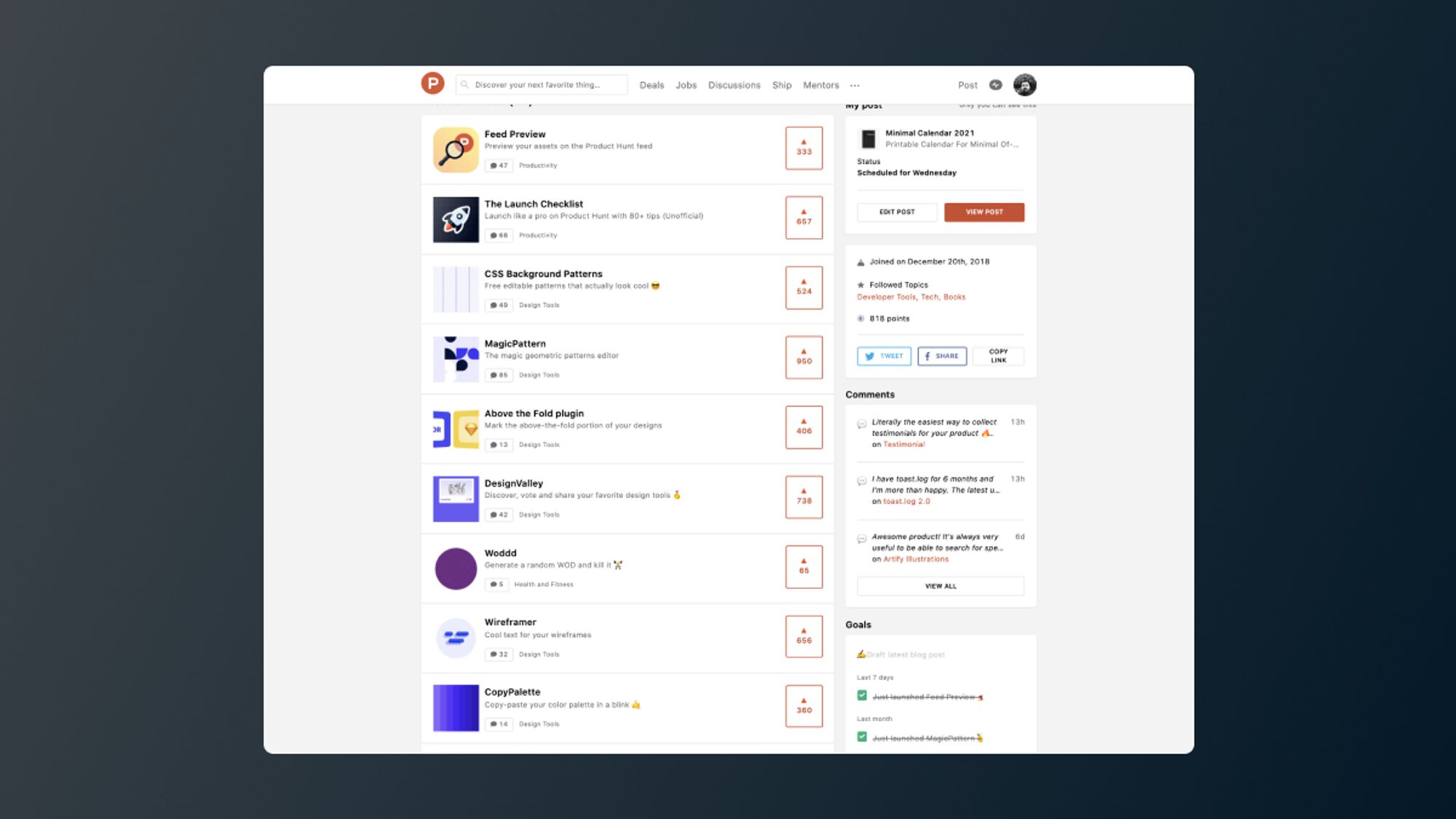
How I sold my first projects
Back in January 2020, I set a goal for myself. I wanted to make at least $1 from my side projects.
Launched DesignValley in February with high expectations. It had a traffic spike during the launch week. Then, I thought that sponsorships and affiliate products are a good monetization strategy.
I was wrong. It needs time and effort. Daily content curation can be exhausting.
In April, I was starting to hate the daily curation routine. It felt unproductive to perform the same tasks daily with zero returns. I was thinking seriously to quit or put it on autopilot.
And at that time, I got an unexpected Twitter DM message. The founder of a new startup reached out and offered to buy my projects.
At first, it felt weird to sell my project, it felt like selling your baby.
But it put me into thoughts and after critical thinking, I decided it was the best way to go. Maintaining the projects was not my passion anymore and any future revenue was far away.
Then, I sold CopyPalette, Wireframer, and DesignValley back in April and made my first indie money.
It was a turning point for me that made me realize that building a side project is more than a hobby.
A drain period with never launched products
I had just sold the project and wanted to find a fresh project to work on.
For a couple of months, I wanted to build a no-design app. My vision was a combination of BannerBear & Canva with a very very very clear design and UX.
I spent countless hours choosing names, building MVPs, setting up authentication and payment flow. In the end, I found myself too afraid to launch the product.
Looking back now, I know what went wrong. The vision was not clear and the functionality was too broad.
It didn't target a niche and it didn't solve one specific problem.
I lost almost two months and someone would say it was a disaster.
But it wasn't.
It taught me to have a clearer vision and execute quicker.
Also, it helped me learn how to work with authentication and Stripe in Node.js.
Spoiler alert. It took me one day to hook up (aka copy/paste) the backend to my next project, MagicPattern.
Starting to work on MagicPattern
It was this intro video from Shopify (re)unite conference that gave me the idea.
MagicPattern was born while watching the video mentioned above. It arose my curiosity on whether it's possible to automate the geometric pattern generation which was trending.

It took me a week to a stable MVP.
From back then, I was building MagicPattern in public for a month.
In August, I announced the beta version for people who want to test the product and give me feedback.
Only 15 people used the product but all of them were excited.
However, I could stop hearing the voices in my head. I doubted myself and my product. I thought that it's a useless product that nobody really cares about.
I never told it before but I was about to quit and make it open source. But I wanted to run the last experiment.
I decided to launch on Product Hunt and depending on the feedback and LTD sales number to quit it or keep on pushing myself.
I'm grateful that I took this decision.
After launching on Product Hunt, I ended up with almost new 4k signups and 30 LTD sales.
That was exactly why I need to put aside my concerns and focus on MagicPattern.
In the next few months, I took many interesting experiments to grow the product. Some of them failed. Some of them succeeded.
The most important lesson during the past few months with MagicPattern was that growth is not linear but random.
You need to embrace it, work hard, and have the patience for the results.
Published my first info product
In November, I run a very interesting experiment with The Product Hunt Checklist.
It's a checklist that helps makers and entrepreneurs prepare for a successful Product Hunt launch.
It took me 16 days to go from idea to launch with $24 in budget.
And documented the entire process along with the key learning.
Mental Health Suffering
I struggled a lot to find the real meaning in my work and personal life until very recently.
I was hitting one professional goal after the other and I was feeling miserable at the same time.
Hope you never experience it in your life.
The process of building the product that I always dreamed to build, started to feel like a boring routine.
Countless times wondered what I'm doing and doubted any decision I made.
It felt like, nothing makes sense and I was struggling to find joy in building my own products.
After many months, I managed to spot the major reason for my suffering.
It's about the toxic culture that many founders promote.
It's simple to build a $10k business. I did it in a month you're an idiot if you struggle for years without results.
More and more people promote their earnings and make it look too easy. But it's rarely that way.
Most of the time, they hide important details (funding, costs, connections) for the sake of building a personal brand.
It took me too long to understand that success is not linear but has infinite rising and falling spikes.
The only way to keep up and maintain your mental health is to embrace the randomness and have patience.
Fought Impostor Syndrome
Almost anyone, even the most experienced founder, has experienced impostor syndrome.
As a designer, I used to experience it when I surfed Dribbble.
As a JavaScript developer, I used to experience it every time I had to implement new functionality.
As a founder, I experienced it every single day.
I postponed launches and new features for months because I was afraid. I was afraid that people will judge me or make fun of my ideas. Then, I got back into 'Building In Secret' to make it perfect.
I almost quit MagicPattern because of these fears.
Thank God, I never quit it. It was the project that changed my life and mindset.
Perfectionism held me back for years. But it shouldn't be that way.
It's important to understand that:
Even the best products in the world are not perfect. Nothing is perfect in real life.
One of the biggest lessons from 2020 for me was to never give an fuck about other people's (toxic) opinions and be proud of your work.
Mindset Change
For many years, I thought success is about making money and hitting milestones.
This year, I managed to hit insane goals of mine and follow my dream of making money from building products as an independent maker.
It took me a while to understand an important lesson though.
Milestones are not your ultimate life goal. They don't bring happiness or peace of mind.
Recently, I heard a podcast by Rob Hope that shifted my views by 180 degrees. In a nutshell, he tells that making money and having your freedom are conflicting goals and you need to focus on one of them.
Many times, I've experienced the fact that I end up hating what I used to love after a while.
The most important lesson was that you have to separate your hobbies and your money-making activities.
It's for the best. For me, blogging and building useful stuff is my passion. Then, I'll focus on freelancing and MagicPattern to reach my ramen profitability in 2021.
Next Steps & Goals
The plan is to put all my effort into MagicPattern to reach $5k MRR during 2021.
It's not a random number. For me, there are 2 main milestones for bootstrapped businesses.
The $1k MRR goal is when you understand that you have a good idea with a good distribution channel. In other words, it's the point you need to take your project seriously.
The $10k MRR goal is when your business is successful. You make a decent living and have a business that is strong enough to endure in the long run. Then, you start becoming the real CEO and delegating your workload for either scaling it to hell or preparing for an acquisition.
Then, I simply picked their middle point!🤷♂️
$1k is very close to me right now and $10k very far.
About my passion, I'll keep blogging about indie-hacking mindset and product growth hacks here and on Twitter.
In the meanwhile, I'm about to start a coding blog because I simply enjoy writing. But more about that later on.
Building stuff is my second biggest passion. Then, I'll keep on building useful apps on the side, mostly for fun, without any direct monetization goals.
That's all. Hope you had a great year and you're ready to jump into 2021 with a hunger for new experiences and success.
Enjoy the last few 2020 days and rest well!
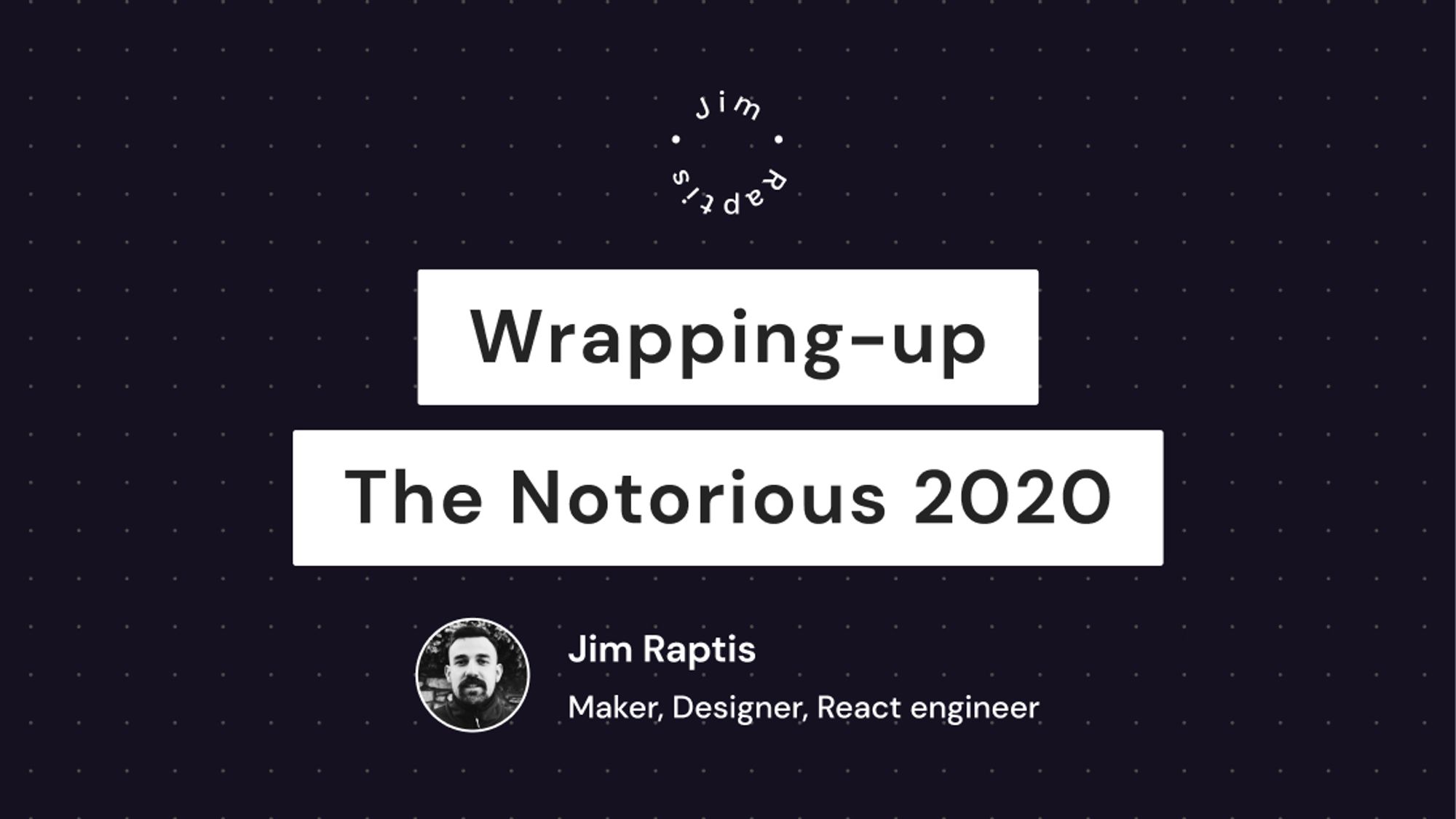
.png?table=block&id=917b538c-9f27-4cd0-858a-20ea2e80d9aa&cache=v2)
.webp?table=block&id=2442a2a4-3cc1-49ef-92a1-eb8fb9949d7b&cache=v2)
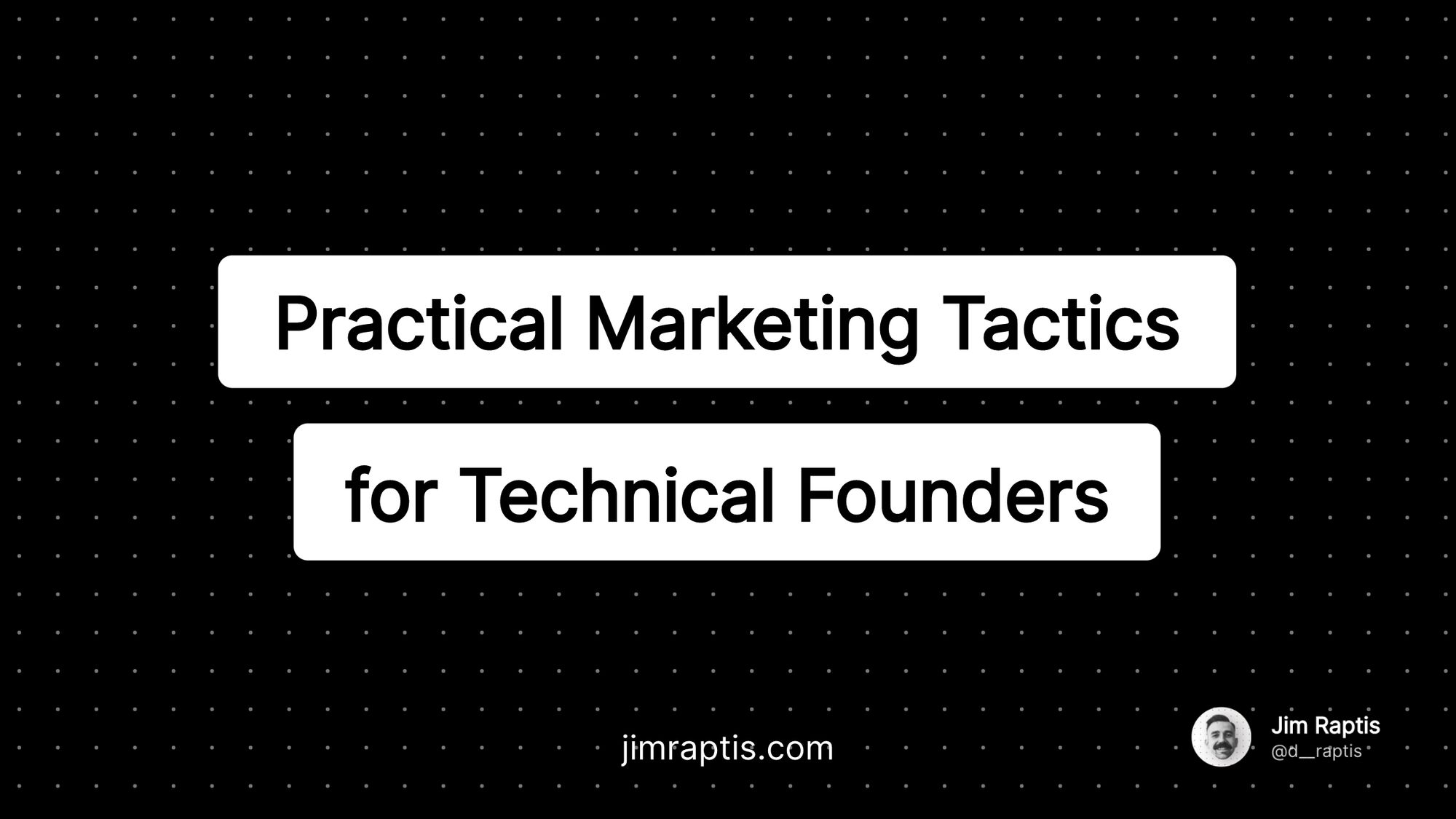
.png?table=block&id=e6ae9d56-f35f-40c2-9b1c-128d395a0b38&cache=v2)
